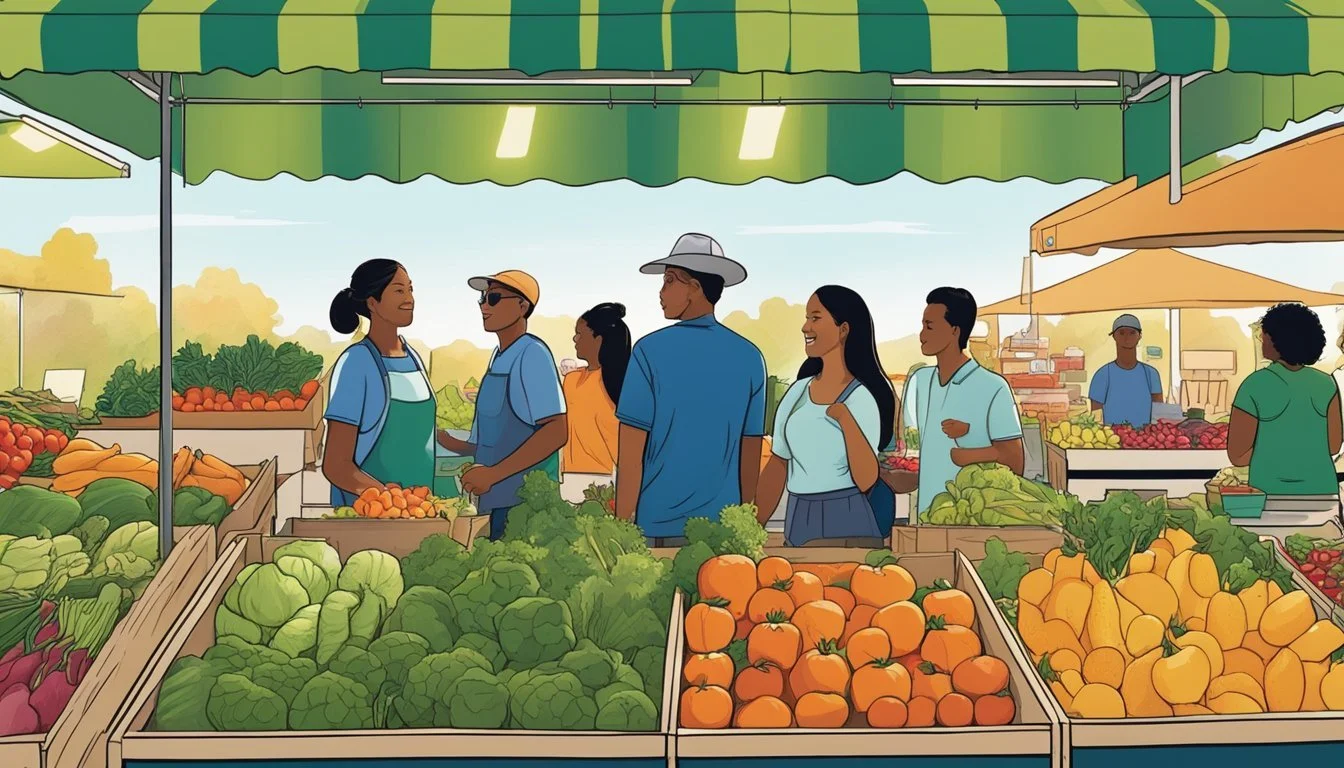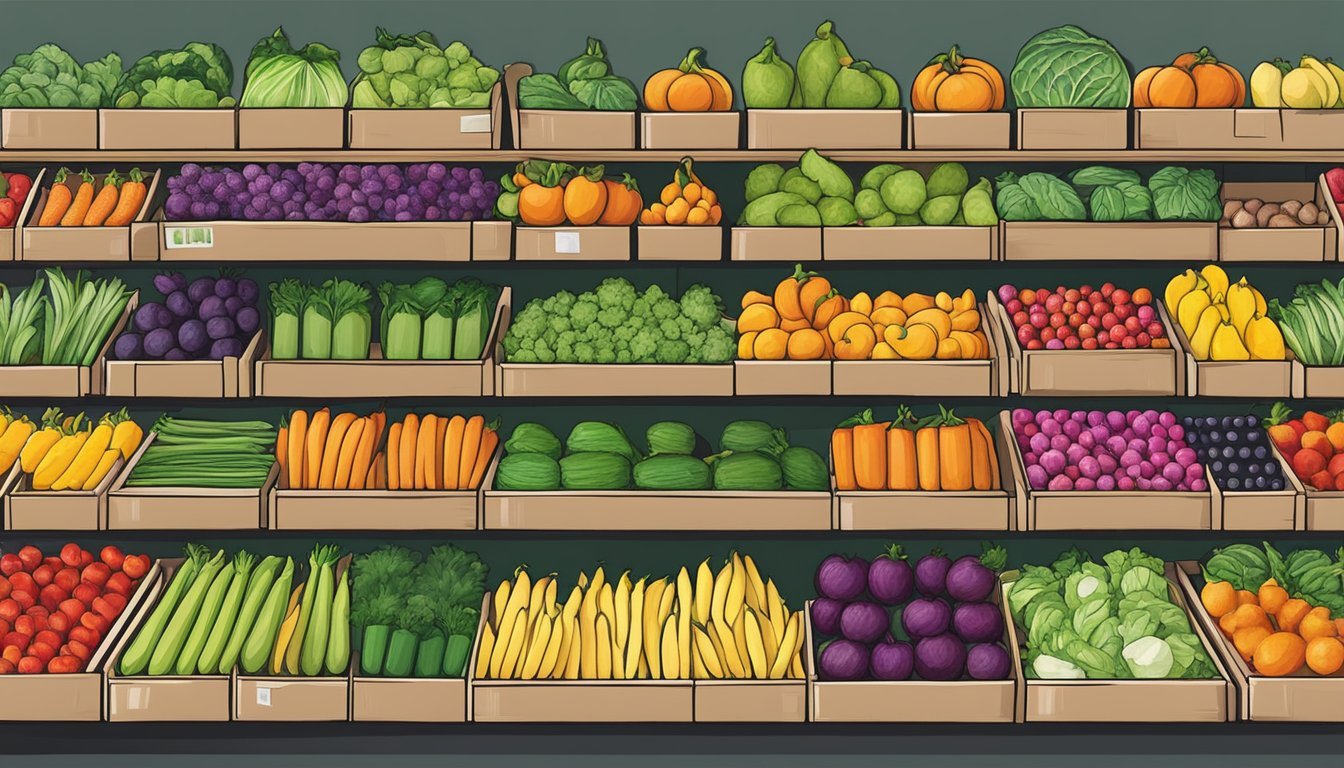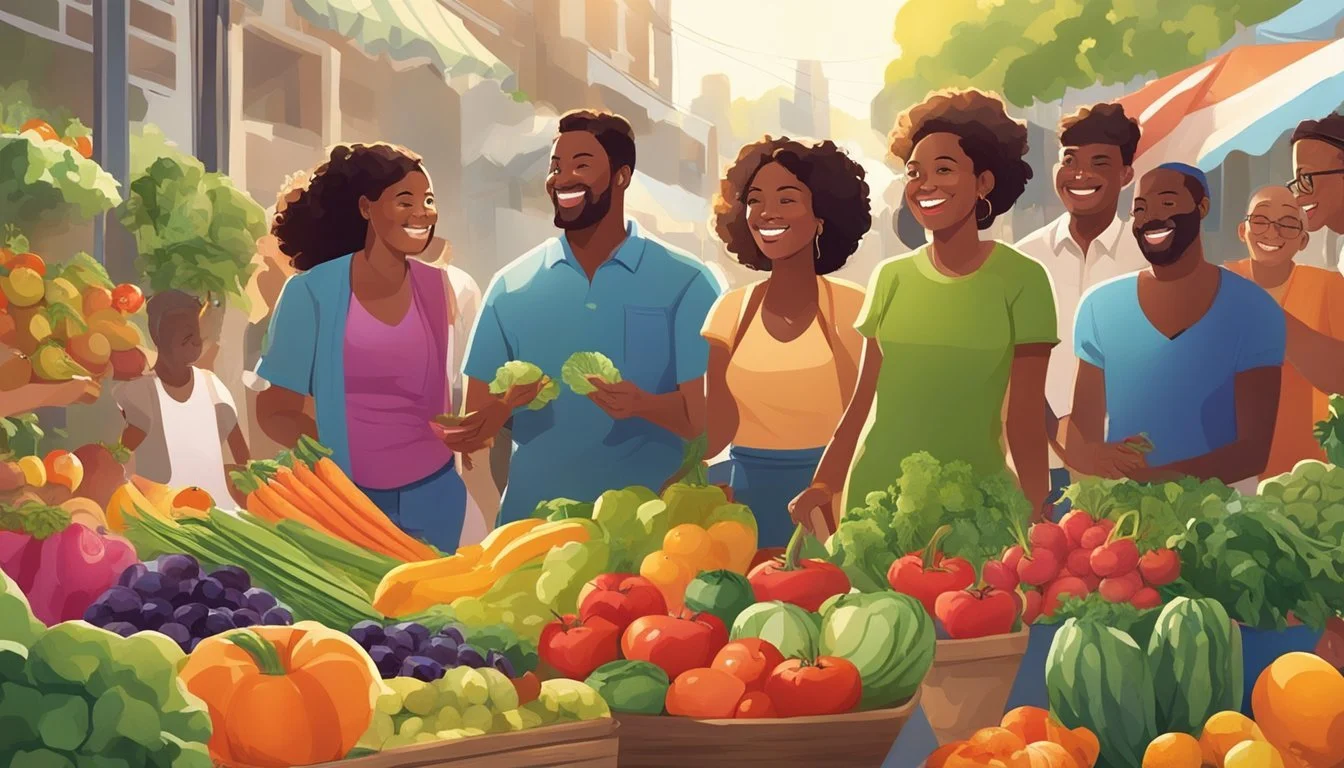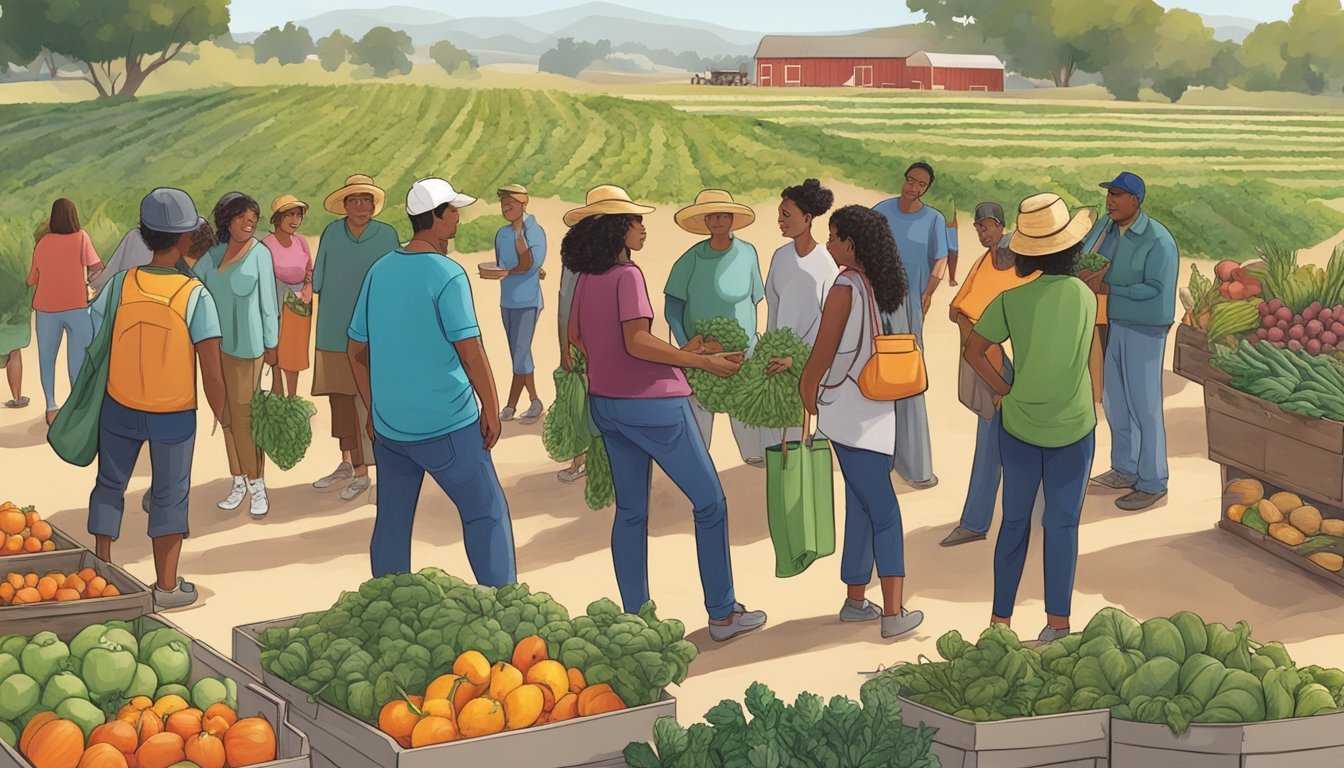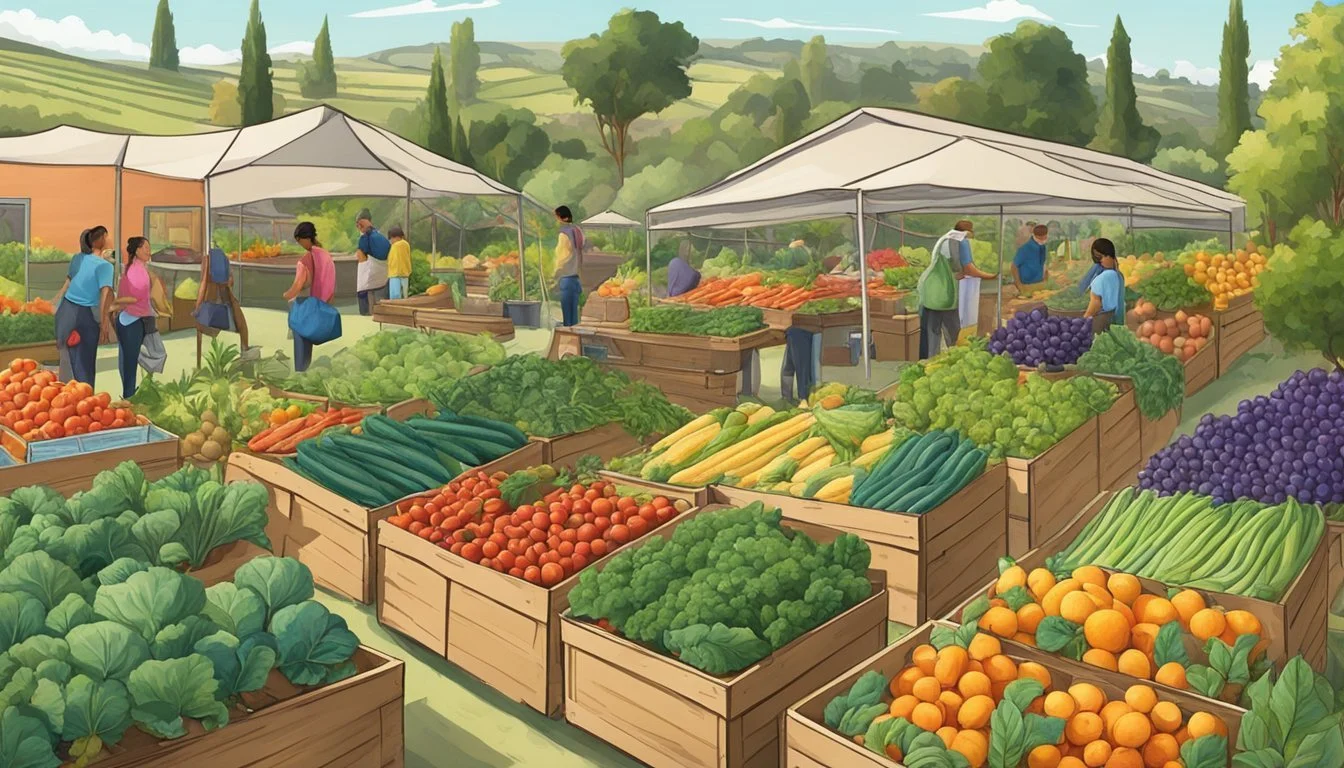Community Supported Agriculture (CSA) in Torrance, CA
A Guide to Local Produce and Farms
Community Supported Agriculture (CSA) is a model of food production and distribution that directly connects farmers and consumers. In Torrance, California, residents have the opportunity to become members of CSAs, where they can purchase a "share" from local farms. Subscribing to a CSA share typically means receiving a weekly or bi-weekly box of freshly harvested produce. This not only ensures that consumers get seasonal, locally-grown fruits and vegetables, but also fosters a stronger relationship between the community and food producers.
The concept of CSA is founded on the principles of sustainable agriculture, food security, and community involvement. It offers an innovative way for consumers in Torrance to invest in their health, the local economy, and the environment simultaneously. By committing to a CSA program, members are taking an active role in the support of local farmers. This model helps farmers gain a reliable income source and plan their crop production more efficiently, knowing that they have a guaranteed market for their goods.
In Torrance, CSA programs may vary, but they generally provide a straightforward process for members to select their preferred box size, frequency of delivery, and pickup or delivery options. Some CSAs may even customize the assortment of produce according to member preferences, ensuring that the offerings meet the community's diverse tastes and needs. With a variety of local farms participating in CSA programs, Torrance residents have access to a broad range of fresh, organic, and seasonal produce contributing to a more resilient local food system.
Understanding CSA
Community Supported Agriculture (CSA) in Torrance, CA, offers an avenue for residents to directly engage with local food systems, promoting health, sustainability, and community resilience.
History of CSA
Community Supported Agriculture (CSA) originated in Japan in the 1960s in response to concerns about food safety and the urbanization of agricultural land. Called "teikei" in Japanese, which translates to "partnership" or "cooperation", this concept took root in the United States in the 1980s. Since then, CSA has become a cornerstone of the local food movement, intertwining the livelihoods of farmers and consumers.
CSA Fundamentals
At its core, CSA is a partnership between a farmer and consumers where the risks and benefits of farming are shared. Participants, known as "shareholders," pay in advance for a portion of the season's harvest, known as a "share". This model provides farmers with upfront capital and guarantees a market for their produce.
The fundamentals of CSA include:
Local and Seasonal Produce: Shareholders receive fresh, seasonal produce harvested from their local farm.
Support for Farmers: Farmers gain financial support and stability through pre-season payments, which assist in planning and farm expenses.
Health and Environment: Many CSA farms practice organic or sustainable agriculture, reducing the use of harmful pesticides and fostering soil health.
Community Connection: CSA enables community members to connect with each other and with the source of their food, fostering deeper relationships and understanding of food production.
By choosing CSA, Torrance residents support local farmers, contribute to a sustainable agriculture system, and receive fresh, healthy produce throughout the farming season.
The CSA Model
The CSA model in Torrance, California, revolves around partnerships between local farms and community members, creating a direct channel of fresh, seasonal produce. It emphasizes mutual benefits, with members subscribing to the harvest of nearby farms.
Membership and Subscription
Members, or subscribers, commit to a farm's CSA program, often paying in advance for a season's worth of produce. This upfront subscription serves as a shared investment in the farm's production and a sign of support for local agriculture.
Single: For individuals or smaller households.
Family: Tailored for larger households or those with higher consumption needs.
Payment Structure:
Upfront: A lump sum at the beginning of the season or payment plan.
Ongoing: Smaller payments at regular intervals.
Shares and Distribution
A 'share' is the allotment of farm produce that a member receives throughout the CSA program. Shares are typically boxed and ready for scheduled pickup or delivery.
Share Sizes:
Half Share: Sufficient for individuals or small families, includes a scaled-down quantity of items.
Full Share: Better suited for families or those with a higher vegetable intake.
Distribution Details:
Pickup: At the farm, local markets, or community drop-off points.
Delivery: Direct to home or a centralized location for member convenience.
Seasonality and Produce Variety
Seasonal variety is a hallmark of the CSA model, where members receive a range of produce that is harvested at its peak. This ensures fresh, nutrient-rich food while supporting sustainable farming practices.
Seasonal Timeline:
Spring to Fall: The typical span of a CSA program, varying by farm and climate.
Winter Programs: Some farms offer shorter winter shares focused on cold-hardy crops or stored produce.
Produce Examples (Season-Dependent):
Spring: Leafy greens, peas, radishes
Summer: Tomatoes, cucumbers, stone fruit
Fall: Squash, root vegetables, apples
By understanding the CSA model in Torrance, consumers can make informed decisions about their food source, investing in both their health and community.
Benefits of Joining a CSA
Joining a Community Supported Agriculture program in Torrance, CA, offers tangible advantages. Members receive fresh, high-quality produce directly from their local farms, contributing positively to both environmental sustainability and the local economy.
Freshness and Quality
CSA members enjoy exceptionally fresh produce as fruits and vegetables are often harvested within 24 hours of pick-up or delivery. This level of freshness not only enhances flavor but also preserves nutrients, contributing to better health outcomes for consumers. Locally grown produce bypasses lengthy supply chains, ensuring that residents of Torrance get the most out of each season's offerings.
Environmental Impact
Opting into a CSA supports sustainable agriculture practices that are gentler on the planet. Small-scale farming tends to use less aggressive farming techniques and fewer chemicals, which benefits the environment and promotes biodiversity. By minimizing transportation distances, CSAs reduce the carbon footprint associated with long-distance food transport.
Support for Local Farmers
Community Supported Agriculture fosters a direct financial connection between local farmers and the Torrance community. By purchasing shares, members provide farmers with a stable income and upfront capital that help cover the initial costs of the planting season. This economic model gives farmers the confidence to continue sustainable farming practices that might otherwise be financially challenging.
Local CSA Choices in Torrance
Torrance residents have access to a variety of Community Supported Agriculture (CSA) programs that offer fresh, local, and often organic produce. These programs support local farmers and provide community members with access to seasonal fruits and vegetables.
Profile of CSAs
JR Organics, located in Escondido, and Community Services Unlimited, based in Los Angeles, are two CSA providers serving the Torrance area. JR Organics has a reputation for high-quality organic produce, while Community Services Unlimited focuses on sustainability and community development.
South Central Farmers’ Cooperative is another notable CSA initiative. Operating out of Buttonwillow, CA, this cooperative serves Los Angeles and Kern County, catering to the Torrance community with organic offerings.
JR Organics
Location: Escondido, CA
Features: Organic produce
Delivery to Torrance: Yes
Community Services Unlimited
Location: Los Angeles, CA
Features: Sustainable farming, community development
Delivery to Torrance: Yes
South Central Farmers’ Cooperative
Location: Buttonwillow, CA
Features: Organic produce, community support
Delivery to Torrance: Yes
Seasonal Offerings
CSAs in Torrance provide an array of seasonal produce. Subscribers can expect to receive a variety of fruits and vegetables throughout the year, reflecting the region's rich agricultural diversity.
Spring offerings might include strawberries, lettuces, and peas, while summer could bring tomatoes, peppers, and stone fruits. Autumn harvests often feature squashes and root vegetables, and winter boxes might contain citrus fruits and hearty greens.
Spring
Strawberries
Lettuces
Peas
Summer
Tomatoes
Peppers
Stone fruits
Autumn
Squashes
Root vegetables
Winter
Citrus fruits
Hearty greens
Torrance's CSA programs ensure that community members have access to a diverse range of fresh and local produce year-round, supporting local agriculture and promoting a healthier lifestyle through seasonal eating.
Membership Details
When joining a Community Supported Agriculture (CSA) program in Torrance, CA, members should understand the specifics of their subscription. This includes the costs involved, the size of shares they can expect, and the logistics regarding the frequency and pickup of their produce.
Cost Considerations
Members typically purchase a subscription, which can be thought of as a seasonal investment in the CSA farm. Costs can vary depending on the farm's produce variety, the length of the subscription, and any additional perks offered. For example:
Basic Share: $250-$300 (seasonal)
Full Share: $400-$500 (seasonal)
Some farms may offer discounts for early subscriptions or for volunteering at the farm. It's advisable to check if the chosen CSA offers a payment plan to spread the cost over the season.
Understanding Share Sizes
CSA shares come in different sizes to accommodate individual needs and family sizes. A standard size for a CSA share might look like this:
Individual/Couple Share: Suitable for 1-2 people.
Family Share: Ideal for a family, includes a larger variety of produce.
Members should ensure the share size aligns with their household’s consumption to minimize food waste while enjoying the season's best offerings.
Frequency and Pickup Logistics
Subscriptions usually run on a weekly or bi-weekly basis throughout the CSA season, which aligns with the local growing period. CSA members should check the schedule provided by their chosen farm to stay informed about pickup dates.
Pickup locations are usually predetermined by the farm:
Farm: Directly where the produce is grown.
Drop Points: Centralized locations in Torrance for convenience.
Members are responsible for adhering to the pickup schedule and are encouraged to communicate with the farm for any special pickup arrangements.
Community and Engagement
Community Supported Agriculture (CSA) programs in Torrance foster strong connections between local farms and community members, creating robust relationships and a renewed sense of community.
Fostering Farm-to-Community Connections
CSA programs in Torrance are a testament to the power of local food systems in strengthening community bonds. Members receive weekly or bi-weekly shares of farm produce, which directly support local farmers and reinforce a sense of community. Farm tours and hands-on experiences are often part of the CSA membership, providing families and individuals a closer look at where their food comes from and the labor that goes into it.
Events and Volunteering
Volunteer opportunities are a cornerstone of the CSA model, offering members chances to engage directly with farming operations. Events such as planting days and harvest festivals invite community members to participate, encouraging hands-on involvement and nurturing the farm-to-community relationship. This engagement builds a community spirit and imparts a deeper appreciation for local agriculture.
Food Preparation and Recipes
Community Supported Agriculture (CSA) members in Torrance receive a variety of seasonal produce, and it becomes essential to know how to prepare these ingredients in nutritious and delicious ways. Utilizing fresh vegetables and fruit in their cooking allows individuals to explore new recipes and flavors, ensuring they get the most out of their CSA box.
Cooking with Seasonal Produce
When it comes to cooking with seasonal produce, the freshness of CSA vegetables and fruit can be a game-changer in the kitchen. As the seasons change, so does the produce available, offering a variety that can inspire new dishes. CSA members should pay attention to the characteristics of each item – whether it's the crunch of a fresh carrot or the tartness of an apple – to best determine how to incorporate them into meals. For instance:
Spring: Prepare a light salad using tender lettuces and radishes.
Summer: Grilled zucchini and bell pepper skewers capture the essence of summer.
Fall: Roasted root vegetables like carrots and sweet potatoes are hearty and warming.
Winter: Soups and stews that simmer butternut squash or kale are comforting and hearty.
Recipe Sharing and Tips
CSA communities often encourage recipe sharing and tips to help members make the most of their seasonal bounty. This collaboration can be a trove of collective wisdom, especially for vegetables or fruit that may be less familiar. Tips such as using the vibrant greens of beets in salads, or roasting acorn squash with a touch of cinnamon, can transform simple ingredients into flavorful dishes.
Members might find that a roasted tomato sauce can be a versatile staple, or that apple slices add a sweet twist to a savory sandwich. Through sharing, they can learn techniques such as blanching, sautéing, or pickling, which can be applied across a variety of vegetables and fruits, maximizing both taste and nutritional value.
Challenges and Considerations
In Torrance, California, Community Supported Agriculture (CSA) faces unique obstacles that necessitate careful planning and open communication between farmers and members.
Weather and Crop Variability
Torrance's coastal climate can influence crop performance, leading to variability in harvests. CSA members may experience differences in yield and variety of produce due to factors like unexpected weather patterns, which can result in crop failure. Farmers must manage this risk and clearly communicate the possibility of such events, setting realistic expectations for their members.
Balancing Expectations with Reality
CSA farmers in Torrance are tasked with the responsibility of balancing their members' expectations with the on-the-ground realities of farming. Members may have questions regarding the assortment and volume of produce. It's essential for CSA operators to provide clear, ongoing communication about what members can anticipate. This transparency helps in building trust and reinforcing the commitment members have to the CSA model.
Supporting CSA Beyond Membership
Engaging in Community Supported Agriculture in Torrance, CA, extends beyond the contribution of membership fees; active involvement and awareness-raising can significantly strengthen the CSA model.
Advocacy and Community Participation
Individuals can advocate for CSAs by partnering with local government and community groups. This partnership fosters a dialogue around urban agriculture policies that can benefit both farmers and the community. The national CSA community of practice, an aggregation of various CSA stakeholders, can serve as a critical ally in these advocacy efforts. Additionally, CSA participants might work closely with the CSA Innovation Network, a platform dedicated to sharing best practices and innovations within the CSA space.
Partnering Organizations:
Local government bodies
Community groups
National CSA community of practice
CSA Innovation Network
In Torrance, the partnership efforts could involve organizing farmer's markets, where CSA programs are highlighted, and local produce is featured prominently. CSA member involvement in community events encourages other citizens to understand and potentially join CSA programs.
Educational Outreach
Educational initiatives are key to expanding CSA understanding and membership in Torrance. CSAs can collaborate with schools and other educational institutions to integrate agricultural education. This includes hands-on learning where students can visit farms and see firsthand how their food is cultivated.
Educational Tools:
School programs
Farm visits
The CSA funds could also be allocated to develop programs or workshops focused on sustainable agricultural practices. By doing so, the CSA programs raise awareness about the importance of local, sustainable food systems. Such outreach efforts often require collaboration with educational entities and draw on the expertise within the national CSA community of practice. Initiatives like the CSA Innovation Network can provide valuable resources and frameworks for these educational endeavors.
Future of CSA in Torrance
Community Supported Agriculture (CSA) is poised to significantly affect the local economy and the lifestyle of Torrance residents. It's a marriage of community engagement and forward-thinking agricultural practices.
Impact on Local Economy and Lifestyle
Community Supported Agriculture in Torrance plays a crucial role in bolstering the local economy by keeping food dollars within the community. As consumers invest in CSA shares, they directly support local farms, which in turn can expand their operations, hire local workers, and contribute to a vibrant regional agriculture sector. The benefits to quality of life are manifold—residents enjoy fresh, seasonal produce while fostering a connection with the earth and their neighbors, leading to a stronger sense of community.
Direct support for local farmers
Job creation within the community
Increased availability of fresh produce leading to healthier lifestyles
Lifestyle Enhancements:
Stronger community bonds due to shared commitment to local produce
Educational opportunities regarding sustainable agriculture and nutrition
Integration of local produce into everyday life, improving diets and well-being
Innovations and Sustainability Aims
Torrance's CSA programs are increasingly entwining innovations in agriculture with sustainability goals. Farmers utilize environmentally responsible farming techniques that reduce water usage, avoid harmful chemicals, and preserve the local ecosystem. Moreover, Torrance's CSA is likely to innovate by integrating technology that improves distribution efficiency and minimizes waste. These innovations support the city’s long-term sustainability aims, ensuring that agricultural practices contribute positively to the environment and set a precedent for future generations.
Sustainability Objectives:
Minimizing environmental impact of farming
Conserving water resources
Innovations:
Adoption of organic and regenerative farming practices
Use of technology to optimize delivery and reduce carbon footprint
Commitment to continuous improvement and education in sustainable farming methods
The trajectory of CSA in Torrance indicates a future where local agriculture is not only a backbone of the community's economy but also a beacon of sustainable living.
Resources and Research
Community Supported Agriculture (CSA) programs in Torrance, CA provide a wealth of data and insightful research that can be beneficial for understanding local food systems. Analyzing CSA demographics, retention rates, and direct marketing strategies illuminates the nuances of these agricultural endeavors.
CSAs Data and Demographics
In Torrance, detailed demographic information can be accessed to understand the profile of CSA members. Sources highlight the importance of this data in grasping who utilizes CSAs, ranging from household income levels to participation in food access programs. Information about the economic viability and retention rates of CSA memberships throws light on the sustainability and growth of CSAs in the area.
Example of demographic data table:
Household Income % of CSA Members Under $50,000 22% $50,000-$100,000 35% Over $100,000 43%
Retention rates are crucial, as they indicate the percentage of members who continue their CSA subscriptions from one season to the next.
Retention Rate:
Year 1 to Year 2: 80% retention
Year 2 to Year 3: 60% retention
Direct marketing practices within CSAs are pivotal for maintaining and expanding membership bases, often involving newsletters, social media outreach, and community engagement events to foster strong farm-member relationships.
Further Reading and Studies
For those interested in an in-depth understanding of Community Supported Agriculture in Torrance, a number of studies and articles are available. They cover topics such as farm and farmer characteristics, the CSA model's significance, and comparisons with conventional food systems. Studies on the efficacy of direct marketing strategies for CSAs and the impact of consumer-producer relationships on CSA success are valuable resources for researchers and practitioners alike.



